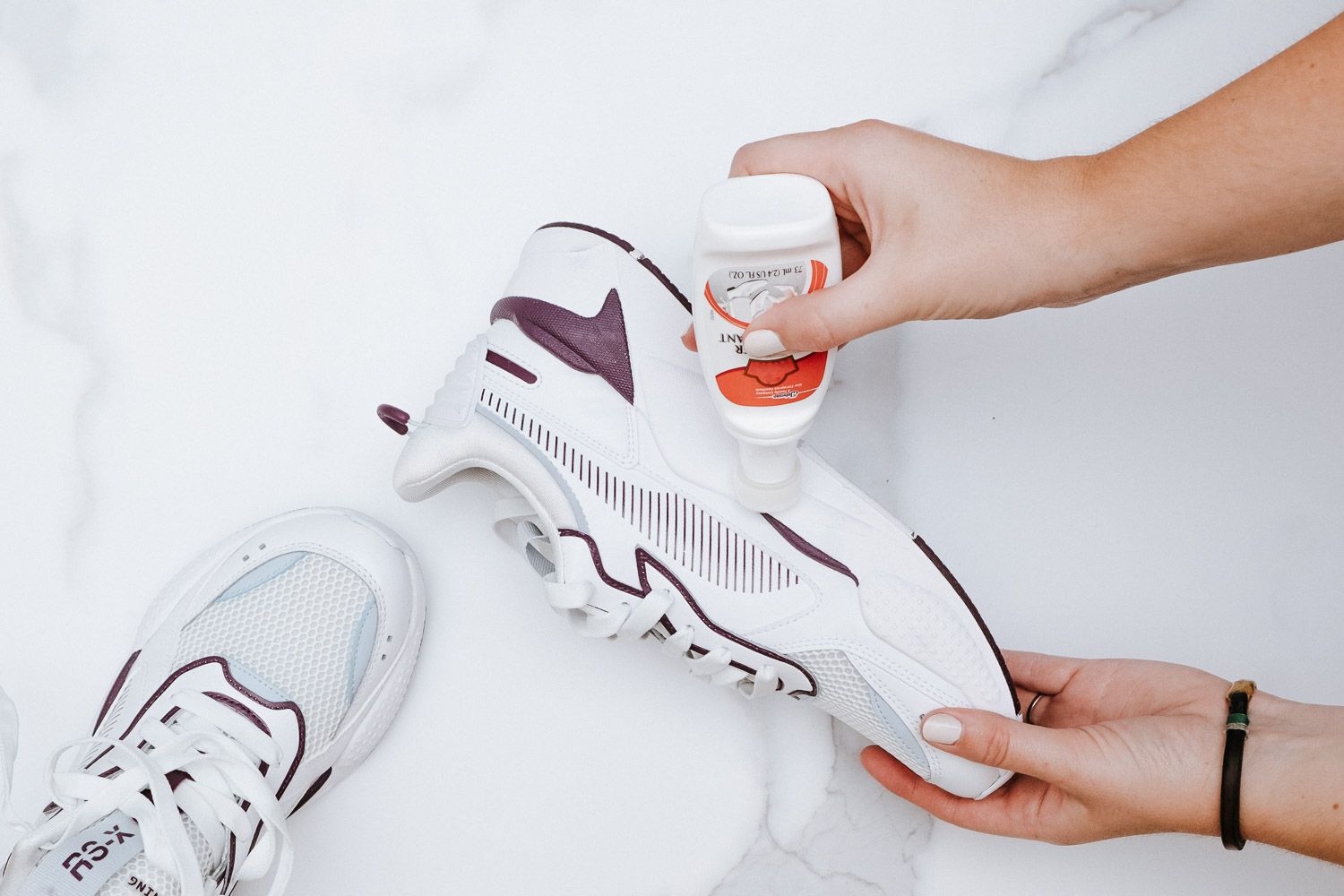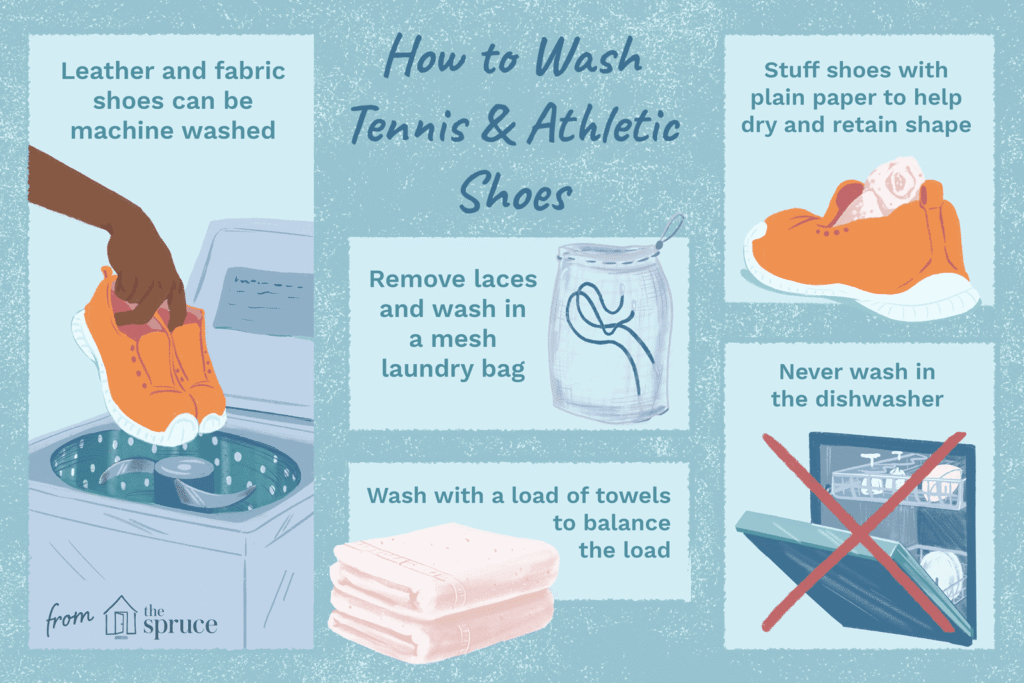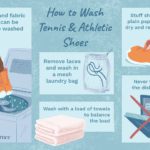Tennis shoes, those ubiquitous symbols of athleticism and casual style, often bear the brunt of our active lives. From the dusty courts to the muddy trails, from the bustling city streets to the gym floor, our tennis shoes endure a constant barrage of dirt, grime, and sweat. Keeping them clean isn’t just about aesthetics; it’s about extending their lifespan, maintaining their performance, and preserving their hygiene. A well-maintained pair of tennis shoes can offer superior comfort and support, preventing potential foot problems caused by accumulated dirt and bacteria. This comprehensive guide delves into the art and science of cleaning tennis shoes, offering a detailed approach for various materials and levels of soiling. We’ll explore different cleaning methods, from simple spot cleaning to deep cleaning techniques, and address common challenges faced by shoe owners. Whether you’re a seasoned athlete, a casual walker, or simply someone who appreciates a clean pair of kicks, this guide provides the knowledge and practical advice you need to keep your tennis shoes looking and performing their best. We’ll examine the impact of different materials on cleaning strategies, providing specific instructions for canvas, leather, suede, and synthetic fabrics. The ultimate goal is to empower you to care for your footwear effectively, maximizing their longevity and ensuring they remain a reliable and stylish part of your wardrobe. We’ll also explore environmentally friendly cleaning options and discuss the importance of proper drying techniques to prevent damage and maintain the integrity of your shoes.
Understanding Your Tennis Shoes: Material Matters
Before diving into cleaning methods, it’s crucial to identify the materials composing your tennis shoes. The material significantly influences the cleaning approach. Canvas shoes, for example, are generally easy to clean, while leather requires a more delicate touch. Suede needs specialized cleaning products, and synthetic materials may react differently to certain chemicals. Ignoring material specifics can lead to damage, discoloration, or even ruin your shoes.

Identifying Your Shoe’s Material
Carefully examine the shoe’s label or manufacturer’s information. This usually specifies the primary materials used. If the label is missing or unclear, consider the texture and appearance of the material. Canvas feels coarse and textured, leather is smooth and supple (though it can vary depending on the treatment), suede has a velvety texture, and synthetics often have a plastic-like feel.
Real-world Example:
Let’s say you have a pair of Adidas tennis shoes. The label might state “Upper: Synthetic Leather, Outsole: Rubber.” This indicates that a gentle cleaning method suitable for synthetic leather is appropriate. Using harsh chemicals might damage the synthetic leather.
Material-Specific Cleaning Considerations:
- Canvas: Highly durable and easy to clean, but prone to staining.
- Leather: Requires gentle cleaning and conditioning to maintain its suppleness and prevent cracking.
- Suede: Delicate and easily damaged, requiring specialized suede cleaners and brushes.
- Synthetic: Generally easy to clean, but certain chemicals may cause discoloration or damage.
Understanding your shoe’s material is the first step to successful cleaning.
Pre-Cleaning Preparations: Setting the Stage for Success
Effective shoe cleaning starts before you even touch the cleaning solution. Proper preparation minimizes damage and maximizes cleaning efficiency. This involves removing loose dirt, assessing the level of soiling, and gathering the necessary supplies. Neglecting this step can lead to uneven cleaning, missed spots, and potentially damaging your shoes.
Removing Loose Dirt and Debris:
Begin by using a soft-bristled brush or a dry cloth to remove loose dirt, dust, and debris from the surface of your shoes. Pay close attention to the grooves and crevices where dirt tends to accumulate. This preliminary step prevents the dirt from being ground into the material during the cleaning process, making the cleaning process more efficient.
Expert Insight:
According to footwear experts, removing loose dirt before applying any cleaning solution is crucial. It prevents the dirt particles from scratching the surface of the shoe and causing damage during the cleaning process.
Assessing the Level of Soiling:
Once the loose dirt is removed, evaluate the level of soiling. Is it a simple case of surface dirt, or are there stubborn stains? This assessment will help you determine the appropriate cleaning method and products to use. A simple wipe-down might suffice for lightly soiled shoes, while heavily soiled shoes may require a more thorough deep cleaning.
Gathering Necessary Supplies:
Before you start, gather all your cleaning supplies. This typically includes a soft-bristled brush, a soft cloth, mild detergent (or a specialized shoe cleaner), lukewarm water, and a clean towel for drying. For stubborn stains, you may need a stain remover or a specialized cleaning solution for your shoe’s material.
| Supply | Purpose |
|---|---|
| Soft-bristled brush | Removes loose dirt and scrubs stains |
| Soft cloth | Applies cleaning solution and wipes off excess |
| Mild detergent | Dissolves dirt and grime |
| Lukewarm water | Dilutes detergent and aids cleaning |
| Clean towel | Dries the shoes |
Cleaning Methods for Different Shoe Materials
Cleaning methods vary significantly depending on the material of your tennis shoes. Canvas shoes can withstand more vigorous cleaning, while leather and suede require a gentler approach. Synthetic materials usually tolerate a range of cleaning methods, but it’s important to test any new cleaner in an inconspicuous area first.
Cleaning Canvas Tennis Shoes:
Canvas shoes are generally easy to clean. Mix a small amount of mild detergent with lukewarm water. Use a soft-bristled brush to gently scrub the shoes, paying attention to soiled areas. Rinse with clean water and allow them to air dry completely away from direct sunlight or heat. For stubborn stains, consider using a stain remover specifically designed for canvas.
Cleaning Leather Tennis Shoes:
Leather requires a more delicate approach. Use a specialized leather cleaner or a mixture of mild soap and water. Apply the cleaning solution gently with a soft cloth, avoiding harsh scrubbing. Wipe off excess solution and allow the shoes to air dry naturally. Once dry, condition the leather to maintain its suppleness and prevent cracking. Avoid submerging leather shoes in water.
Cleaning Suede Tennis Shoes:
Suede is particularly delicate and requires specialized cleaning products and techniques. Use a suede brush to remove loose dirt and stains. For stubborn stains, use a suede cleaner according to the manufacturer’s instructions. Never use water or harsh chemicals on suede. Allow the shoes to air dry completely.
Cleaning Synthetic Tennis Shoes:
Synthetic materials are usually quite durable and easy to clean. You can use a variety of cleaning methods, including mild soap and water, or specialized synthetic shoe cleaners. Always test any cleaning solution in an inconspicuous area before applying it to the entire shoe. Allow the shoes to air dry completely.
Drying Your Tennis Shoes Properly: Preventing Damage
Proper drying is crucial to prevent damage and maintain the integrity of your tennis shoes. Avoid using high heat, such as a dryer or direct sunlight, as this can cause the materials to shrink, crack, or discolor. Instead, allow your shoes to air dry naturally in a well-ventilated area. Stuffing the shoes with crumpled newspaper can help maintain their shape and absorb excess moisture.
Air Drying Techniques:
The best way to dry tennis shoes is by air drying them. Find a well-ventilated area, away from direct sunlight or heat sources. Stuffing the shoes with crumpled newspaper or paper towels helps absorb excess moisture and maintain the shoe’s shape. Avoid using a hairdryer or placing the shoes near a radiator, as this can damage the materials.
Avoiding Heat Damage:
High heat can cause irreversible damage to your tennis shoes. Avoid using a clothes dryer, placing them in direct sunlight, or near a heat source. This can lead to shrinkage, cracking, discoloration, and even damage to the glue holding the shoes together. Always allow your shoes to air dry naturally.
Maintaining Shoe Shape:
Stuffing your shoes with crumpled newspaper or shoe trees helps maintain their shape while they are drying. This prevents them from becoming misshapen and helps them retain their original form.
Summary and Recap
Cleaning your tennis shoes effectively involves understanding the material composition, preparing properly, selecting appropriate cleaning methods, and ensuring proper drying. Different materials require different approaches. Canvas shoes can handle more vigorous cleaning, while leather and suede need gentler methods. Synthetic materials offer flexibility, but always test cleaners beforehand. Pre-cleaning steps, such as removing loose dirt and assessing the level of soiling, are essential for optimal results. Proper drying, away from direct heat or sunlight, is crucial to prevent damage. Remembering these key steps will prolong the life of your tennis shoes and keep them looking their best.
- Identify your shoe’s material: This dictates the cleaning method.
- Pre-clean: Remove loose dirt before applying any cleaning solution.
- Choose the right cleaning method: Use appropriate cleaners for each material.
- Air dry: Avoid high heat to prevent damage.
- Maintain shape: Stuff shoes with paper to prevent misshaping.
By following these guidelines, you can keep your tennis shoes clean, well-maintained, and ready for your next game or adventure.
Frequently Asked Questions (FAQs)
How often should I clean my tennis shoes?
The frequency depends on how often you wear them and the conditions in which you wear them. For regular use, cleaning every 2-4 weeks is recommended. If you wear them in particularly muddy or dirty conditions, more frequent cleaning may be necessary.
Can I use bleach to clean my tennis shoes?
Generally, it’s best to avoid bleach, as it can damage or discolor most shoe materials, especially leather and suede. For very stubborn stains, you might consider a diluted bleach solution on a small, inconspicuous area as a test, but proceed with extreme caution.
What if my tennis shoes have a strong odor?
Strong odors often result from sweat and bacteria buildup. After cleaning, allow the shoes to air dry completely. You can also use baking soda to absorb odors. Sprinkle baking soda inside the shoes, let it sit for several hours or overnight, then shake it out thoroughly.
Can I put my tennis shoes in the washing machine?
This is generally not recommended, as the washing machine’s agitation can damage the shoes, particularly those with delicate materials or glued components. Hand washing is always the safer option.
What’s the best way to clean white tennis shoes?
White tennis shoes are notoriously prone to staining. Regular cleaning is key. Use a mild detergent and a soft-bristled brush, paying close attention to stained areas. For stubborn stains, consider a specialized white shoe cleaner. Always air dry completely.



